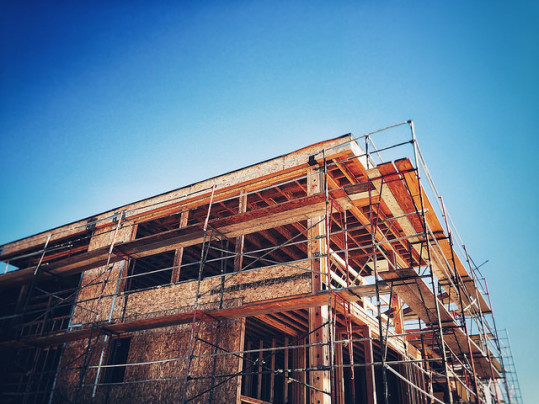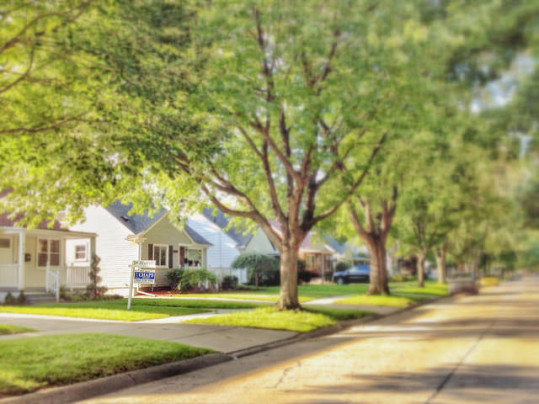These days, there are a lot of people interested in buying a house. A stronger economy, more jobs, and years of pent-up demand have led to a rising number of Americans who are eager to make a move. But while that’s positive, more buyers active in the market also means homes sell faster. In fact, according to Nationwide’s recent Health of Housing Markets Report, the average home was on the market for just 67 days in 2017 – with houses in some market going in half that time. That means, buyers need to do their homework, cause they may not have the luxury of being able to take their time debating each home’s pros and cons. It also means good news for sellers. “As we head into spring and the traditional season when sales heat up, buyers will find that desirable homes won’t be on the market for long,” says David Berson, Nationwide’s senior vice president and chief economist. “Today, the average home is on the market almost half the length of time that it was six years ago. Of course, that is good news for people looking to sell their home.” More here.
Archive for March 2018
Housing Market May Be Ready To Shift Gears
As a potential home buyer or seller, you may not think you have much interest in the economy, consumer confidence, or even the details of the housing market’s monthly ups-and-downs. However, all the moving parts of the economy affect one another and, in order to stay savvy about your next move, it’s good to keep an eye on where things are. Fannie Mae’s Economic & Strategic Research Group makes it easy by providing a monthly update on where things are and where they may be headed. According to their most recent outlook, the economy and housing market were both fairly slow to start the year but may be ready to shift gears. According to the release, “The downshift is expected to be temporary as economic fundamentals remain positive. Rising household net worth, upbeat consumer confidence, and a strong labor market have now been buoyed by legislative stimulus.” In short, the group expects that the economy will grow over the coming months, along with Americans’ economic optimism. More here.
Are More New Houses On The Way?
Generally speaking, there are fewer homes available to buy right now than is considered normal. And though conditions will differ from one market to the next, when inventory is an issue, it leads to competition and higher prices. That’s because, there are too many buyers vying for the number of homes currently available. But when there are more buyers than there are homes for sale, conditions are also ripe for builders. And typically, they’ll take notice and build more homes to accommodate those buyers. Based on recent readings of the National Association of Home Builders’ Housing Market Index – which measures builders’ confidence in the market for new homes – that may be where the market is right now. For example, builders confidence has been at or above 70 for four consecutive months, on a scale where any number above 50 indicates more builders see conditions as good than poor. And most of their optimism is based on market conditions and their expectations for future sales, rather than current traffic. Which means, builders see an opportunity in this year’s market and may begin ramping up construction of new homes. If that happens, it’ll provide more choices for buyers and help slow spiking price increases. More here.
The Neighborhood Feature Buyers Want At Any Age
The factors that influence a home buyer’s decision to buy a particular house in a particular neighborhood are very similar across demographic groups. After all, our lives are more similar than they are different. We all want to live in a safe neighborhood with access to things we want and need, like recreation and health care providers. However, depending on the age of the buyer, there are some are other neighborhood features, like schools, that may appeal more to a younger home buyer than an older one. For that reason, the National Association of Realtors’ Home Buyer and Seller Generational Trends study takes an annual look at who’s buying homes, what kind of homes, and for what reasons. Lawrence Yun, NAR’s chief economist, says the results show there is one factor that appeals to buyers of all ages. “The sense of community and wanting friends and family nearby is a major factor for many home buyers of all ages,” Yun said. “Similar to Gen X buyers who have their parents living at home, millennial buyers with kids may seek the convenience of having family nearby to help raise their family.” In short, proximity to family and friends was important to buyers of all ages, whether they were millennials or baby boomers. More here.
Demand For Home Purchase Loans Picks Up
According to the Mortgage Bankers Association’s Weekly Applications Survey, average mortgage rates were up and down last week, with rates rising for FHA and 30-year fixed-rate loans with conforming loan balances but down for jumbo loans and 15-year fixed-rate mortgages. But despite the movement, mortgage rates didn’t deter potential home buyers. In fact, purchase application demand was up 3 percent from one week earlier and also up 3 percent from last year. Joel Kan, an MBA economist, told CNBC that, though for-sale inventory remains an issue for home buyers, demand continues to push forward. “Although the purchase market continues to be constrained by a lack of supply, applications for home purchase loans increased to the highest level in over a month, as demographic and economic conditions remain favorable for housing demand,” Kan said. In short, though mortgage rates have trended higher in recent weeks, Americans still see an opportunity to buy and demand remains high. The MBA’s weekly survey has been conducted since 1990 and covers 75 percent of all retail residential mortgage applications. More here.
Homeowner Equity Continues To Increase
When you buy a house, you’re not just purchasing a place to live. You’re also making an investment in the real estate market. Which means, as your home’s value grows, so does your equity. Equity, of course, refers to the amount a property is worth minus the amount still owed on the mortgage. Put simply, if your equity is growing, that’s good news. Which is why new numbers from the Board of Governors of the Federal Reserve System are encouraging. That’s because they show homeowner equity on the rise. In fact, the total value of homeowner equity has increased $1.2 trillion over the past year and reached $14.4 trillion in the fourth quarter of last year. In short, that means homeowners are seeing the value of their homes, and their investment, grow. Whether you’re a current homeowner or are about to become one, this is a positive sign – as it indicates that the real estate market is strengthening and offering Americans a good opportunity to find a place they can, not only call home, but also a good financial decision. More here.
Home Flipping Returns, Hits 11-Year High
Home flipping – which typically refers to the practice of buying a home, renovating it, and selling it for a profit – is popular again and, according to one recent analysis, has now returned to levels not seen since 2006. ATTOM Data Solutions’ Year-End 2017 U.S. Home Flipping Report shows that the number of single-family homes and condos that were flipped in 2017 was at an 11-year high. But, while home flipping got a bad name after the housing crash, this time is different. “The surge in home flipping in the last three years is built on a more fundamentally sound foundation than the flipping frenzy that we witnessed a little more than a decade ago,” Daren Blomquist, senior vice president at ATTOM, said. “Flippers are behaving more rationally, as evidenced by average gross flipping returns of 50 percent over the last three years compared to average gross flipping returns of just 31 percent between 2004 and 2006.” This is the first time in more than a decade that there have been more than 200,000 home flips in consecutive years. More here.







